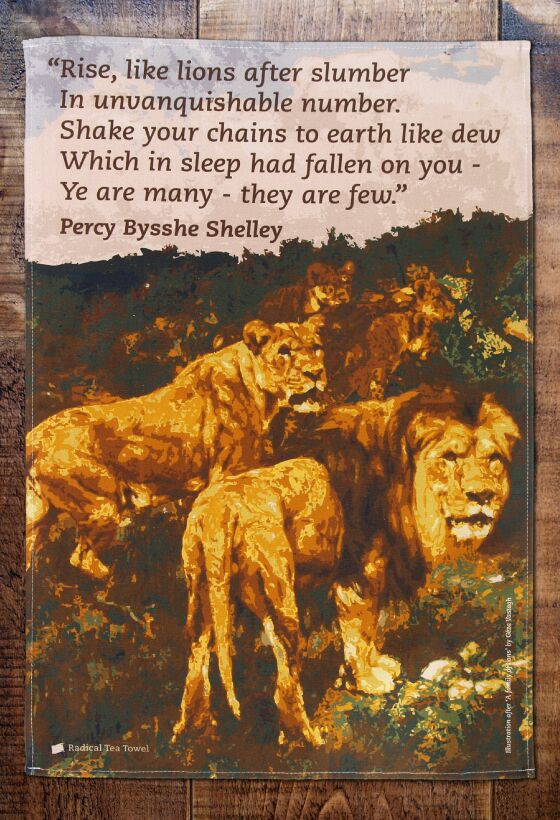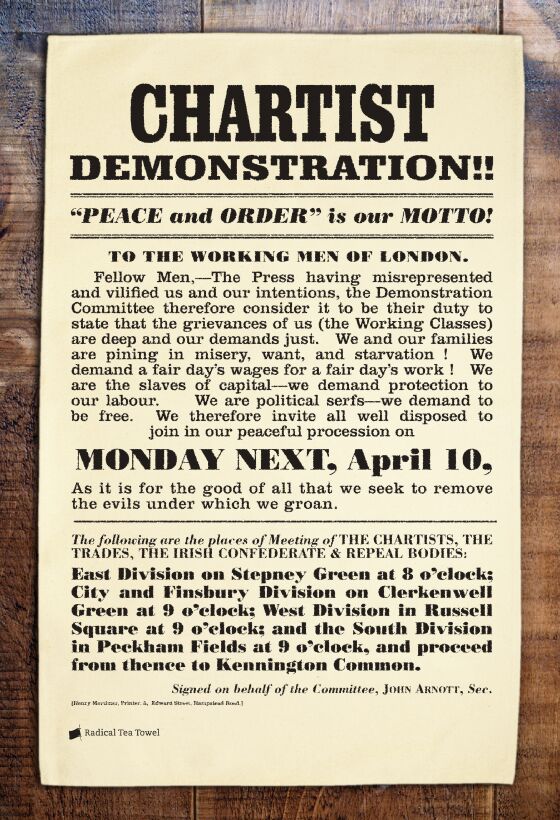We use cookies to make your shopping experience better. By using our website, you're agreeing to the collection of data as described in our Privacy Policy.
Who were the Chartists and why do they Matter Today?
As the country prepares for another election in five weeks, we explore the forgotten history of the Chartists and the Newport Rising in bringing about our modern democracy.
"Rise, like lions after slumber."
This was writer Percy Bysshe Shelley's message for British workers in the wake of the Peterloo Massacre.
And rise they did.
Shelley’s revolutionary poem, The Masque of Anarchy, wasn’t published in Britain until 1832 – thirteen years after Peterloo.
The government censors had wanted to keep Shelley’s stirring words out of reach until things calmed down.
But how wrong they were to think the 1830s would be ‘calm’.

Chartism: a people's movement for democracy
In 1838, Chartism burst onto the political scene with those advocating for the demands of its ‘People’s Charter’.
Calling for full male suffrage and regular elections, these ‘Chartists’ were marching down the same road to democracy on which the Peterloo martyrs had fallen.
And they were marching in force. Chartism caught on like wildfire in 1830s Britain, finding a strong and passionate following among the millions of workers who were excluded by the property bar on voting.
But rather than take the Chartist movement's popularity as a sign of the desperate need for political change, the British ruling class doubled down.
When the Chartist petitioners arrived at Westminster in July 1839, the House of Commons – full of MPs elected, at that time, by only the wealthiest minority of citizens – refused to hear them.
And if that wasn’t insult enough to the aspiration of Britons for true self-government, a well-liked Chartist leader named Henry Vincent was soon after thrown in jail for stirring up ‘social unrest’.

Click to see our tea towel inspired by Percy Shelly's famous poem!
The Newport rising
In this climate of despotic repression it was only a matter of time before the Chartists made a stand.
The stage would be the Welsh coastal town of Newport (no surprise given South Wales' long history as a stronghold of radicalism, then and since).
Arrested activists were being held at the Westgate Hotel in the centre of town and the marchers wanted them freed.
In November 1839, 10,000 protestors – many of them impoverished miners from the South Wales Coalfield – converged on Newport behind the Welsh Chartists John Frost, Zephaniah Williams, and William Jones.
But as usual in 19th century Britain, the authorities were ready, if not eager, to meet democratic demands with violence.
The Mayor of Newport had a number of regular soldiers at his disposal and had quickly sworn in hundreds of volunteer ‘special constables’ to reinforce them.
When the marchers arrived outside the Westgate Hotel on the morning of 4th November 1839, they were met with gunfire from the redcoats within. The poorly armed Chartists (if they were armed at all) stood no chance.
After half an hour’s bloody chaos, perhaps 24 Chartists lay dead – joining the fallen from Peterloo as yet more martyrs in the struggle for real democracy in 19th century Britain.

Remember the Chartists with this design based on an original poster from the movement.
Queen Victoria's Chartist suppression
The usual Victorian era epilogue to the British government's massacre of democratic protestors followed.
Laurels were thrown on the ‘Forces of Order’, with the Mayor of Newport even being knighted by Queen Victoria herself!
The surviving leaders of the protest, meanwhile, were made an example of: just like the Tolpuddle Martyrs before them, Frost, Williams and Jones were sentenced to penal transportation (banishment to Australia).
To this day, precious few people know about the 1839 Newport Rising, or Chartism more broadly.
But by recalling these acts of courageous rebellion, we are reminded of the profoundly radical traditions which have shaped modern day Britain.
As the country gears up for another election, it's worth remembering how we got our democracy in the first place – and why it's still worth fighting for.
Browse our latest designs celebrating movements for change throughout history



